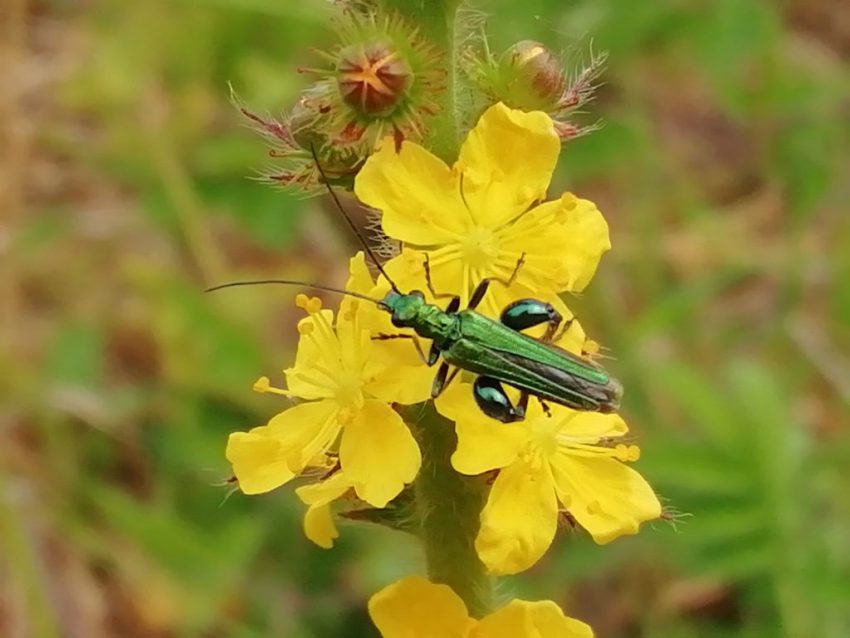Agrimony is a yellow UK wildflower
There are two species of Agrimony which are both reasonably common in Britain: Agrimonia eupatoria and Agrimonia procera.
Agrimony – Agrimonia eupatoria
Agrimony flowers
This British wild flower grows in grass and flowers in summer, from June onwards. The five-petalled yellow flowers are about 1cm across and borne on a 70cm high spike. Sometimes the spike has a red tinge, which is one way to distinguish it from Agrimonia procera. A. procera is also taller at about 1m and strongly lemon scented (hence it’s common name Fragrant Agrimony). However Agrimonia procera is less frequent than eupatoria on the North Kent coast and the Seaford area of Sussex where I took these photos.
Note – Scent alone is not enough to distinguish the species because there is a scented subspecies of Agrimonia eupatoria.


Here it is in another coastal location where I found it growing on chalk at Seaford Head.

In Cradle Valley Seaford I found plant growing in a sheltered valley and again on chalk. It was in longish grass alongside Vipers Bugloss and Lesser Knapweed.

Agrimonia eupatoria leaves
The leaves are interesting in that they are pinnate (leaflets arranged along the leaf stalk in pairs, usually with an end leaflet) but sometimes with small leaflets in between the main ones. Each leaflet is about 5cm long.

Developing seed heads of Agrimony
By July in 2022, the plants were starting to think about setting seed and the flower spikes were turning brown.


I have labelled posts mentioning Agrimony – Agrimonia eupatoria with the tag Agrimony and Agrimonia
https://photographingwildflowers.co.uk/tag/agrimony/
https://photographingwildflowers.co.uk/tag/agrimonia/

